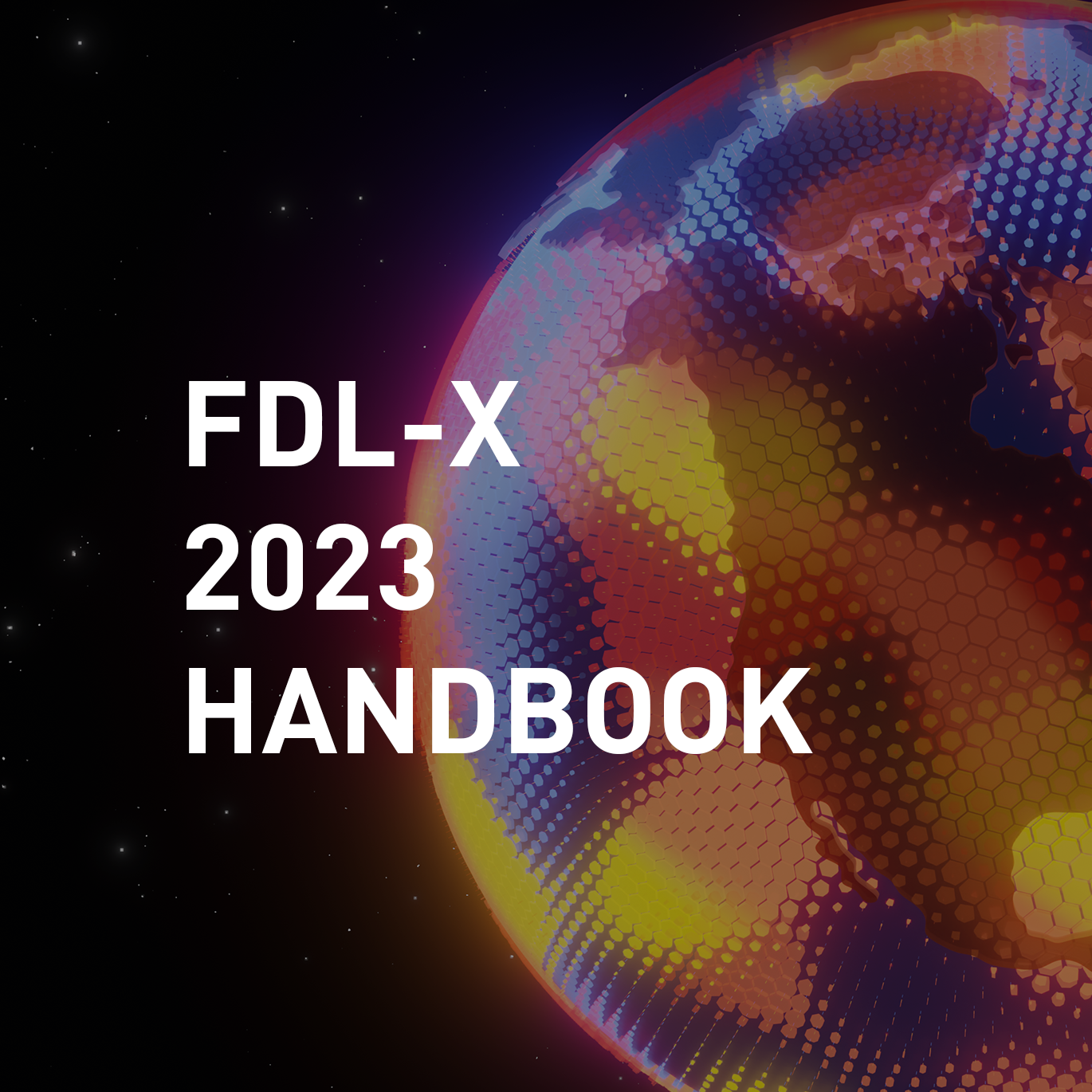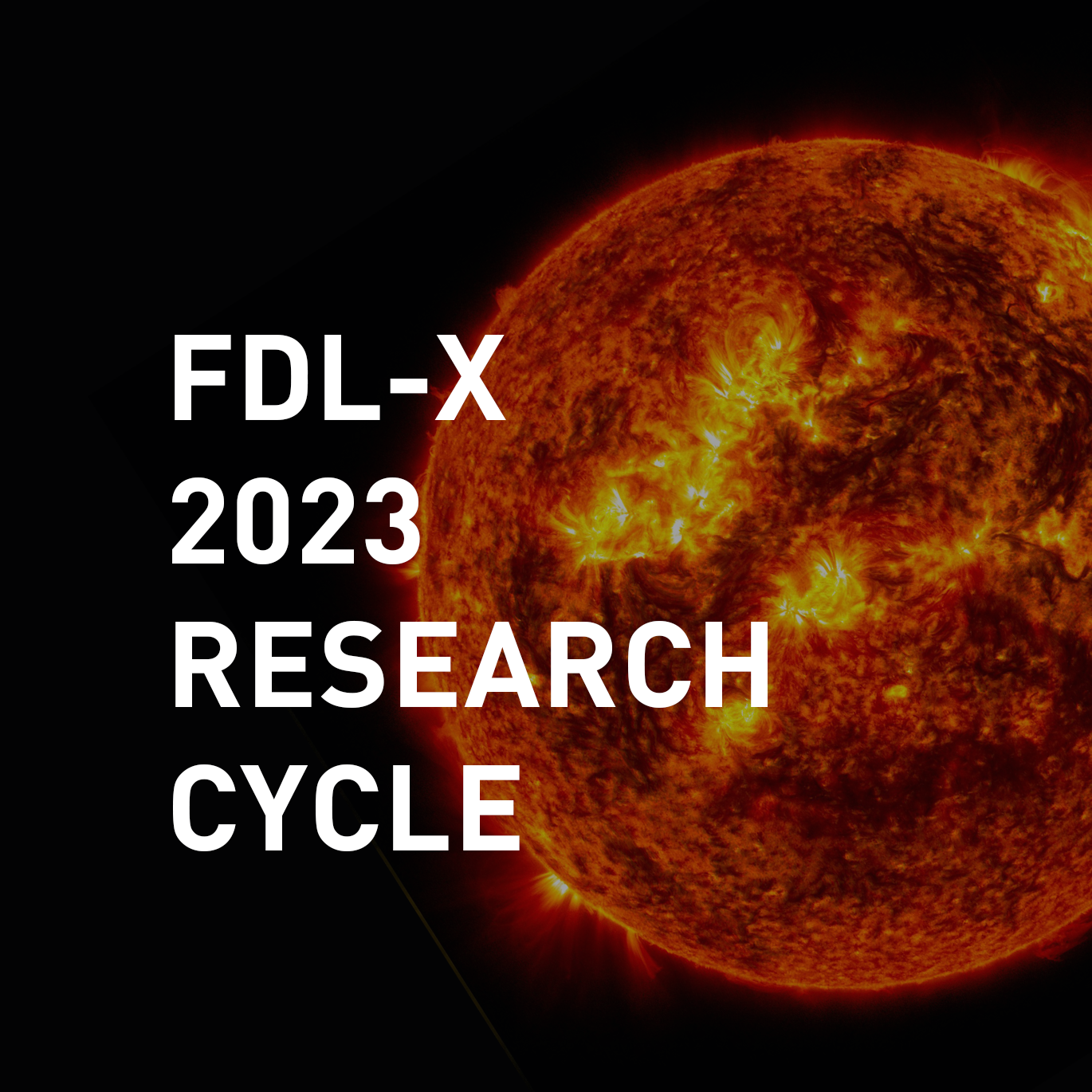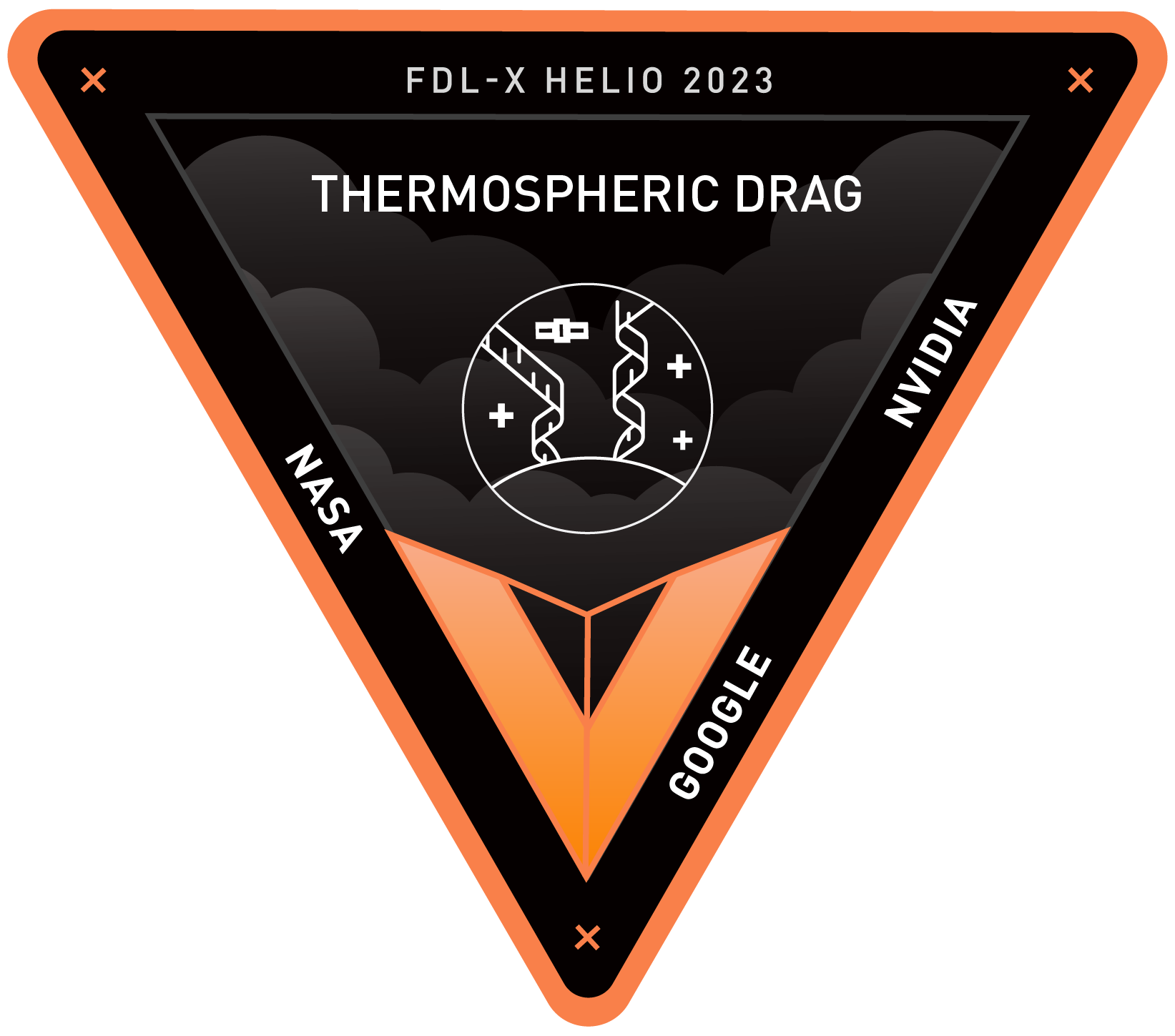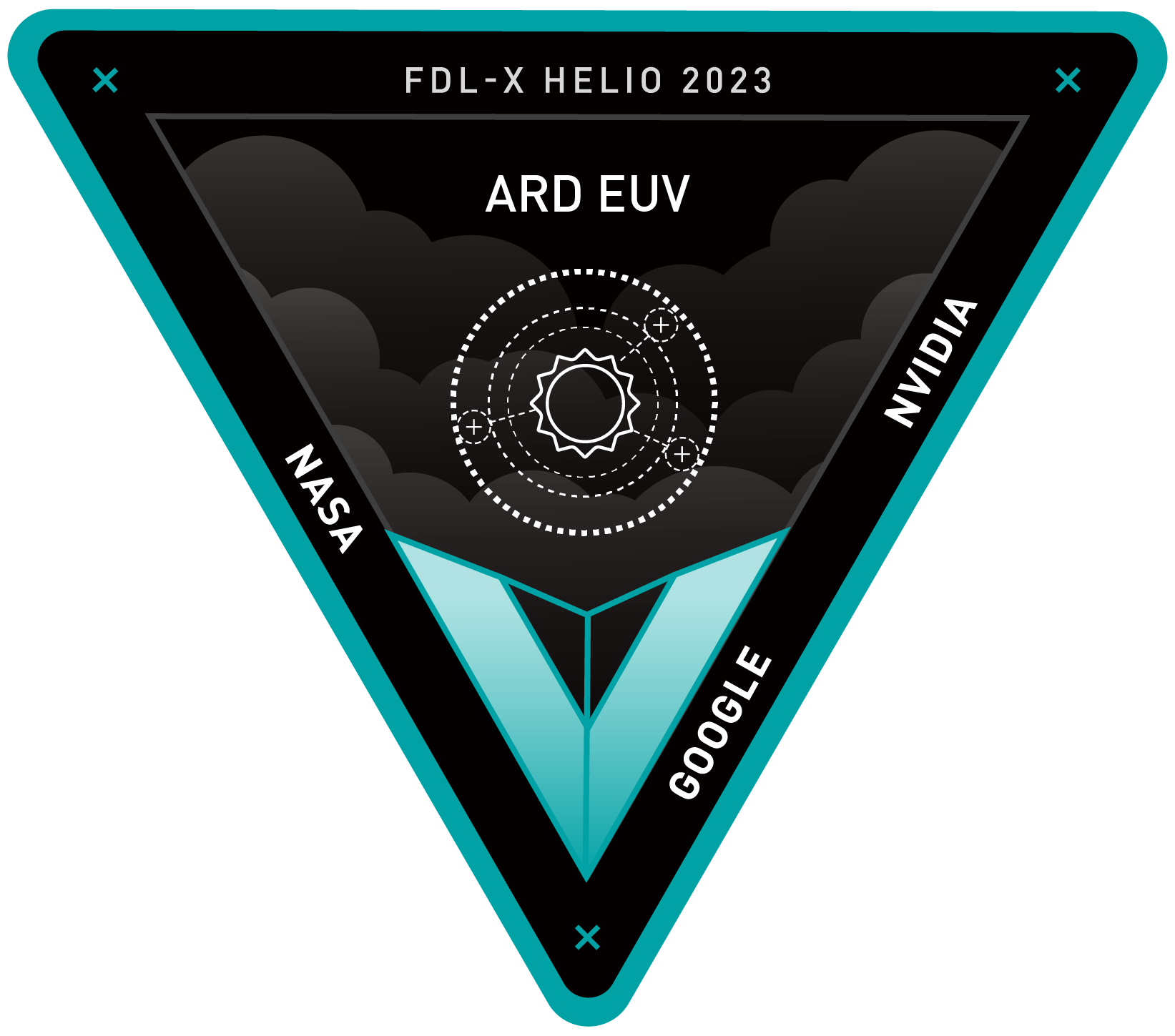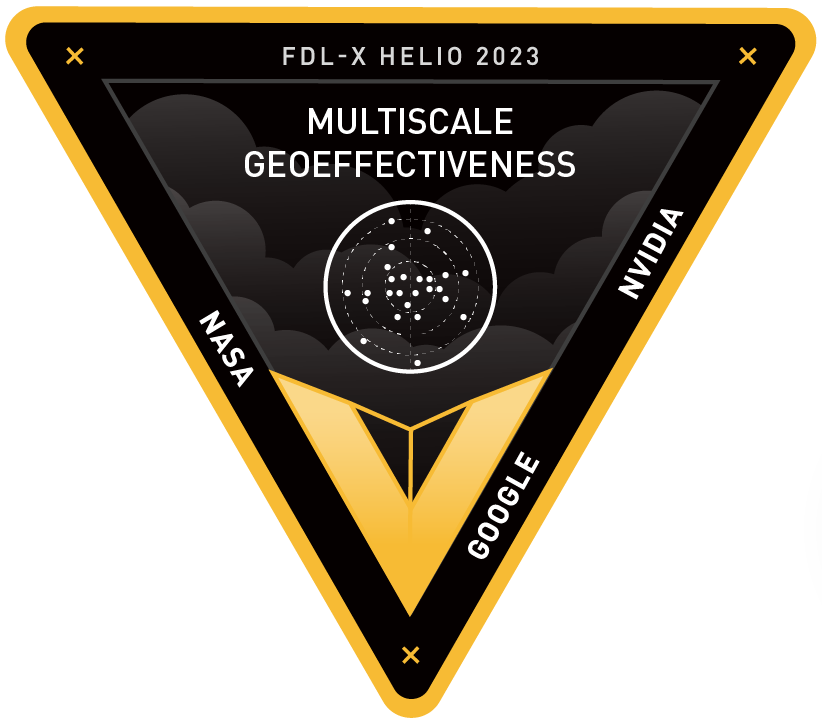
ADVANCED APPLIED AI RESEARCH FOR
NASA HELIOPHYSICS APPLICATIONS
FDL-X 2023
FDL-X is a public private partnership with NASA, Trillium Technologies, Google Cloud, NVIDIA and leaders in commercial AI. This heliophysics pilot initiative is a derivative of the successful FDL.AI which developed integrated applied AI research and technology for Heliophysics applications, building on a body of NASA data and AI pipelines generated during FDL.AI and hosted on SpaceML.org.
The integrated sprint was based on previous FDL.AI work (TRL 0-4) and technology and mature to (TRL 4-6) with an emphasis on tooling, modular development, reproducibility and testing the potential for integrated AI solutions, where proven AI pipelines inform each other to unlock brand new capabilities.
FDL-X is an advanced applied AI research program for Heliophysics and Geoscience applications and ensures that AI outcomes are fine-tuned to tackle valid open science and engineering problems by building interdisciplinary approaches, between SMEs and ML and cloud-based engineering techniques. FDL.AI’s ability to attract the best researchers from around the world is part of its success formula - but not all. Over the years, we’ve evolved numerous process innovations that allow research teams to consistently deliver world-class outcomes for our Federal stakeholders at NASA over a very accelerated time-scale.
Navigate to research area
Thermospheric Drag
EUV Irradiance and Thermospheric Density
Solar extreme ultraviolet (EUV) radiation is the dominant driver of the Earth›s thermosphere/ionosphere system. During periods of elevated solar activity, enhanced solar EUV driving causes adverse space weather effects such as radio communication blackouts and increased drag on satellites in low-earth orbit. In 2014, an electrical malfunction of the MEGS-A channel on the Solar Dynamic Observatory Extreme Ultraviolet Variability Experiment (SDO/EVE) instrument compromised our ability to monitor EUV solar spectral irradiance in the 5- to 37-nm wavelength range.
Can we improve our ability to model thermospheric drag (e.g. Karman, FDL.AI 2021) by integrating EUV irradiance?
This project will build upon the EUV virtual instrument for observing in this wavelength range from 9 narrowband EUV imaging channels (FDL.AI 2018). As four EUV channels may not contain sufficient information to model the solar spectral irradiance, the team may need to leverage additional FDL.AI outputs, including an image-to-image translation approach (to reconstruct missing EUV channels) and auto-calibration techniques (FDL.AI 2019).
-
-
Karman - a Machine Learning Software Package for Benchmarking Thermospheric Density Models - Amos 2023
-
Improving thermospheric drag modeling with EUV images: an FDL-X 2023 project - 4th Eddy Cross Disciplinary Symposium
Incorporating Direct EUV Irradiance from Solar Images into Thermospheric Density Modelling with Machine Learning - AGU: NG008. Machine Learning in Space Weather
High-Cadence Thermospheric Density Estimation enabled by Machine Learning on Solar Imagery - NeurIPS Workshop
ARD EUV
Analysis Ready Data of EUV Solar Spectral Irradiance
Analysis-ready data, such as the Solar Dynamics Observatory’s Machine Learning Dataset (SDOML), provides a set of clean, curated data for scientists wishing to use machine learning in their research. Importantly, version 2.0 of the SDOML dataset contains both data and metadata, and is hosted in the public cloud in the Zarr format. While SDOML includes the full-disk extreme ultraviolet (EUV; SDO/AIA) and magnetic field images (SDO/HMI) alongside EUV Solar Spectral Irradiance with SDO/EVE, an electrical malfunction of the MEGS-A channel on the Solar Dynamic Observatory Extreme Ultraviolet Variability Experiment (SDO/EVE) instrument compromised our ability to monitor EUV solar spectral irradiance in the 5- to 37-nm wavelength range.
In this project, the team will integrate several FDL.AI successes to build an analysis-ready data product (and pipeline) for Solar Spectral Irradiance (SSI) from any viewpoint in the Solar System. The project will start by enhancing the SDOML v2.0 data using an SDO/AIA auto calibration method (FDL.AI 2019) before building an updated EUV SSI virtual instrument (FDL.AI 2018). Leveraging the success of the 4π Sun (FDL.AI 2022), the team can extend their work to provide analysis-ready data from any vantage point in the Solar System. The framework developed in this project has applications for additional data products such as temperature maps (differential emission measure maps; e.g. FDL.AI 2018).
-
-
Virtual EVE: a Deep Learning Model for Solar Irradiance Prediction - NeurIPS Workshop
A Scientific Cloud Computing Platform for Ingestion and Processing of SDO Data - 4th Eddy Cross-Disciplinary Symposium
AIA is All You Need: SDO MEGS A&B virtualization via Convolutional Deep Learning - 4th Eddy Cross-Disciplinary Symposium
A Novel Synthesis of SDO EVE MEGS A&B Spectral Irradiance Data through Convolutional Deep Learning - AGU: SH019. Numerical Tools and Simulations for HeliophysicsA Scientific Cloud Computing Platform for Ingestion and Processing of SDO Data - 2024 DASH/IHDEA meeting
Multiscale Geoeffectiveness
A multiscale ‘Sun-to-mud’ GIC forecasting scheme
The project goes after one of the ‘holy grails’ of space weather forecasting---to provide reliable forecasts of space weather effects at a regional level beyond nowcasting. The project pursues a hybrid approach of combining ML/AI and ‘human-in-the-loop’ methodologies to track the geoeffective potential of solar transients from the moment they erupt, through their journey to and impact on earth, and the flow of that energy down to the ground.
The end product will provide continuously-updated estimates of GIC proxies (DB/dt) around the globe, from the moment the properties of Earth-directed transients have been measured to their impact at Earth 3-4 days later.
-
-
Multiscale Geoeffectiveness Forecasting using SHEATH and DAGGER - 4th Eddy Cross-Disciplinary Symposium
Multiscale Geoeffectiveness Forecasting: Upgrading the DAGGER Pipeline - AGU: NG008. Machine Learning in Space Weather






